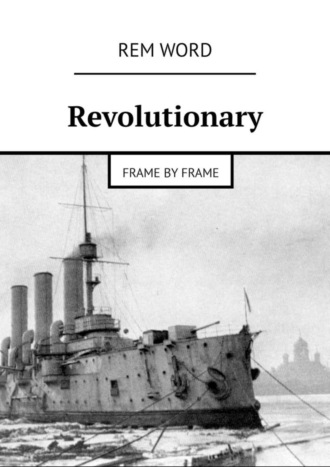
Полная версия
Revolutionary. Frame by frame
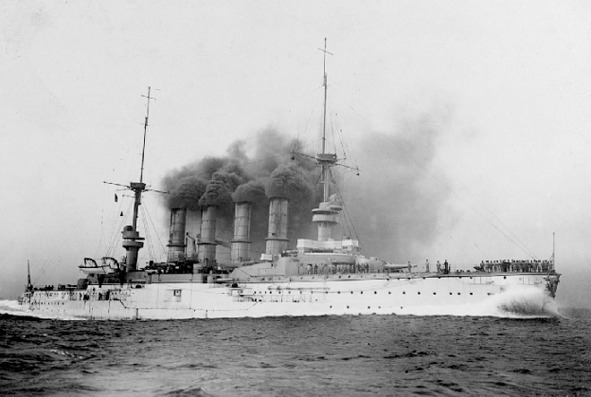
Somehow it happened that, despite all the efforts, Germany is not a great maritime power. However, newcomers are lucky. Perhaps that is why, on November 1, 1914, the battle at the Chilean port of Coronel is in favor of the Open Sea Fleet. Two armored, three light German cruisers are engaged in raiding. Their main goal is to prevent the admission of Chilean nitrate to British weapons factories. The forces of the English seem to be commensurate; two armored and two light cruisers. The undoubted courage of the British admiral Cradock prevails over his prudence. The squadron is sent to intercept the Germans are not sufficiently prepared, not in full force. Grand Fleet attacks in the evening, when its ships are illuminated by the setting sun, and the Germanic gray-painted cruisers hide the dark background of the coast. The Scharnhorst and the same type Gneisenau, whose commanders, in contrast to most British reservists, received excellent training, achieve hits of 210 mm and 150 mm. airborne guns. Two armored cruisers are sailing to the bottom. It is still in the custom of time to rescue teams of sunken enemy ships, but this is not the case. In icy, 9—10 degrees Celsius water, 1654 British sailors die. Sanitary losses of the German fleet – two wounded. On the photo is the German armored cruiser Scharnhorst.
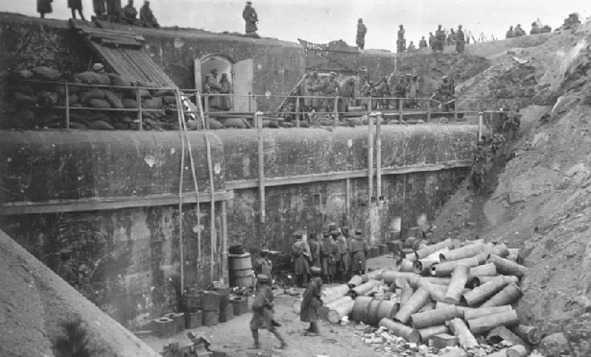
…At the opposite theater of military operations, before the commandant of Qingdao decides on the surrender of the fortress, the Japanese spend tens of thousands of large-caliber shells on this fort. When trying to break through the German destroyer torpedoes the Japanese cruiser. However, on November 7, 1914, after the depletion of ammunition stocks, Qingdao capitulated. The human irretrievable loss of Germany is 300 people against 1200 in Japan. However, the Europeans for the second time, after the Russian Empire, are defeated by the ambitious East Asian tiger. Europe and the United States are on their guard. Photography – the Japanese visiting the German citadel. In the foreground are carts containing charges for large-caliber guns.
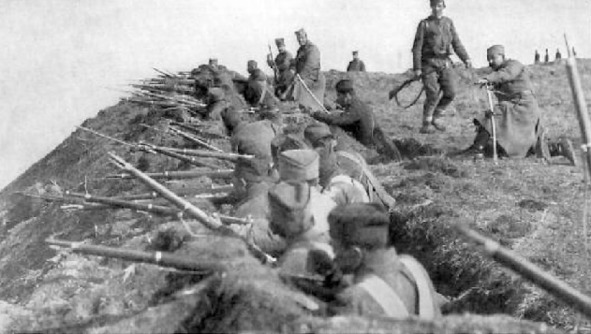
Since July 28, the Austro-Hungarian units have advanced some distance in Serbia, but already on August 19 they have suffered a crushing defeat. The second, more powerful wave of the Austrian offensive, November 30, 1914, overwhelms Belgrade. Ammunition and foodstuffs from France and Russia allow the capital to be liberated by December 15, 1914. The front stabilizes at the frontier of the Sava and Drina rivers. In total, by this time the Austro-Hungarian Empire was losing 28,000 people killed, 46,000 prisoners, Serbia – 22,000 permanently, 19,000 prisoners. In the photo – the Serbian soldiers in the trenches. Neighborhood Kolubar, November 16, 1914
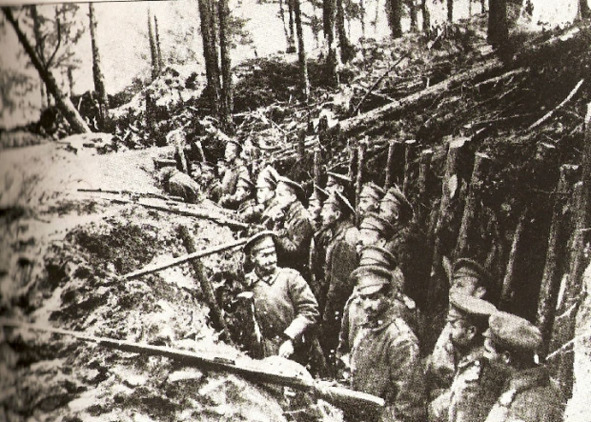
So, after the Turkish fleet fired on the Russian cities of Sevastopol, Odessa, Feodosiya and Novorossiysk, on November 11—12, 1914, Russia declared war on Turkey. Three days later the same declare England and France. On December 22, 1914, after an unsuccessful offensive a month earlier, a defensive operation of the Russian Caucasian Army starts at the Sarykamysh point of the Karr region. Due to the frosts, lack of uniforms and food, the Turkish army suffers significant non-combat losses. In a series of battles, the Russian army captures the initiative and goes over to the counter offensive. Already on January 4, 1915, the Headquarters received reports on the complete defeat of the Turkish corps. Total Ottomans lose 28,000 dead and 25—30,000 prisoners. Irrecoverable losses of the Russian Empire – 15,000 people. A side effect is that the Turks launch the mechanism of the mass genocide of Armenians. The blame for the defeat of the army, its commanders need to shift to someone. The guilt of ethnic Armenians lies only in the fact that they are loyally greeted by Russian troops. The photograph shows the Russian units in the trenches near Sarykamysh. It is still a combat-ready, disciplined and general rush army
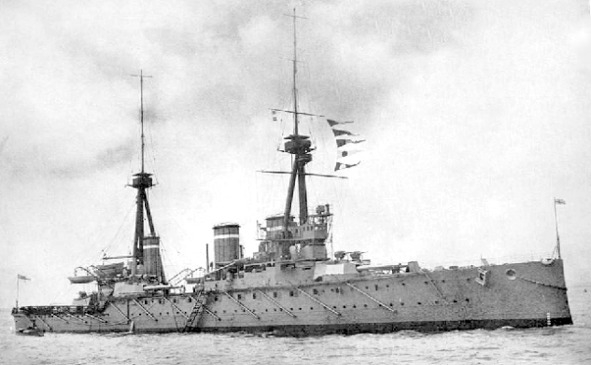
A German squadron of familiar to us armored “Scharnhorst”, “Gneisenau” and three light cruisers, two transport and one hospital ship sent to the Falkland Islands to strike at the British base of Stanley. The main idea is to deprive the enemy, so necessary for the voracious ship’s fireboxes, of coal. However, an unpleasant surprise for the German crews is the news of being in the raid of the object of attack, which arrived on the eve of a strong British squadron. In the photo – the British cruiser Invisible (“Invincible”). The salvo weight is 3,000 kg., 3.8 times higher than the similar characteristics of Scharnhorst guns.
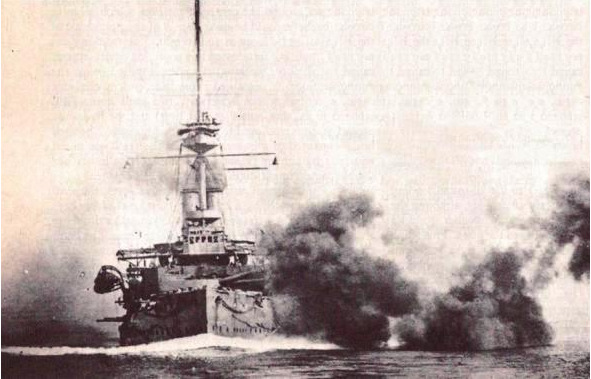
Immediately, seven British cruisers and an battleship rush to intercept German ships. The fire contact is established on December 8, 1914. Further, quite straightforwardly, the caliber of the guns affects the course of the battle. Size matters. At a distance of 12 kilometers 305 mm. British guns can confidently hit enemy ships, and 210 mm. guns of German cruisers – no. In the photo – the old, but formidable British battleship “Canopus”, the port guard, firing from 12-inch guns. Initially, the Germans expected to see at Port Stanley only this one, which has a rather weak booking
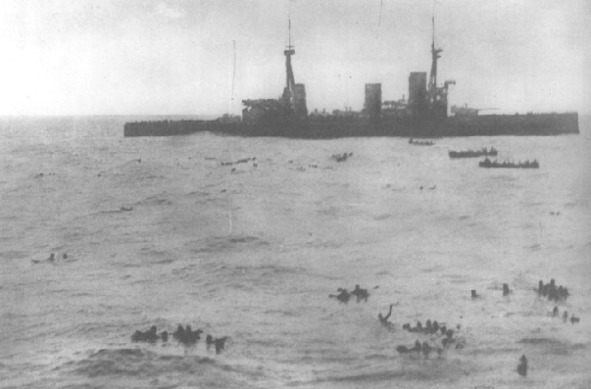
The Scharnhorst gets 40 hits and goes down. Of the 860 sailors, no one is saved. Two hours later, the same fate befalls Gneisenau. Survive 187 people. In addition, two light German cruisers and transports are killed in fire and water. One cruiser and hospital ship manages to escape. The total human losses of the Germans – 2110 people, 212 prisoners. The British squadron loses 6 sailors. Somewhat later, on August 28, 1915, in the battle near the island of Helgoland, the British allowed four German ships to the bottom and finally restore the reputation of their fleet.Photography – sailors from the Gneisenau are looking for salvation on the British cruiser Inflexible
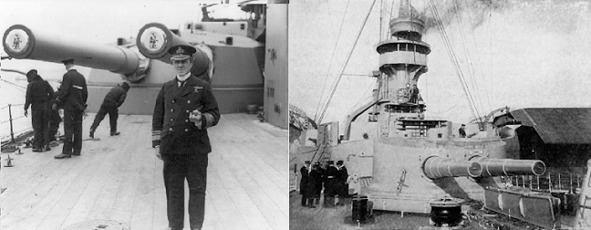
Size matters. On the left – guns of the Invincible cruiser, on the right – the Scharnhorst
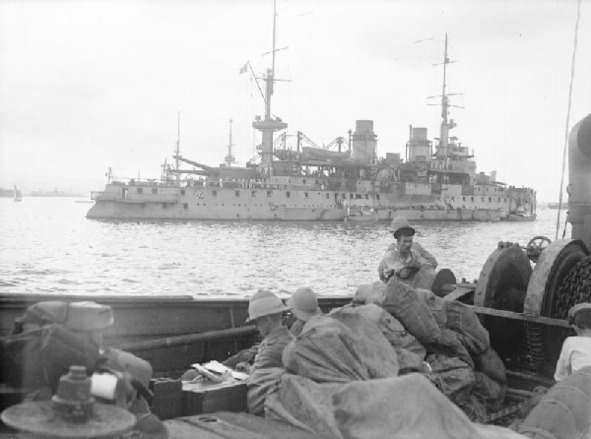
Since February 19, 1915, after the preliminary “raids”, seven Anglo-French pennants fired at Turkish forts. Thanks to both the actions of spies and their own logic, the Ottomans strengthen the citadels in advance. In the morning, February 18, despite an unfavorable forecast, the allied fleet attacks the Turkish coastal fortifications. The main idea of the initiator of the operation, then still quite young lion (or even a bulldog) of W. Churchill: “Turkey is an Asian power over which progressive Europe, led by Great Britain, will easily triumph.” It is supposed to land troops on the Gallipoi Peninsula (North-West Coast of Asia Minor), 80,000 people, in order to open a sea connection with Russia and force Turkey to peace. As a prize for all-round assistance, the notorious Straits (free communication of the Black and Mediterranean Seas) are offered to Emperor Nicholas II, even if veiled, Photo – French squadron battleship Charlemagne. In the foreground are soldiers of the Entente who are preparing to disembark on the Turkish coast. January 1915
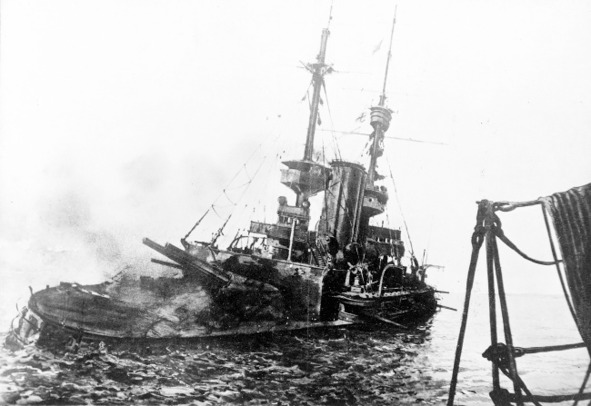
As a result of the counteraction of the Turkish coastal batteries, a series of battles, explosions on mines, the ten pennants of the Allied fleet very quickly go to the bottom. Be that as it may, a large-scale landing of naval assault forces has been carried out since April 25. Already on the first day of the operation, under heavy machine-gun fire, the allies lose at least 18,000 people alone with those killed. Somewhat later, Turkish artillery collects a heavy harvest. Britain still does not believe in the failure of the ambitious operation and is pushing the “last battalion” – an additional 10,000 paratroopers. German-Turkish guns devour them as well. The command of the Entente recognizes the catastrophe and withdraws the troops. The evacuation continues from December 7, 1915 to January 9, 1916. Britain loses 40,000 people, its allies from the dominions 10,000, France 10,000, Turkey 100,000 (but it wins). The photo is a British battleship doddornoot “Irrenzistable”, suffered damage from a sea mine, coastal batteries of the enemy, gone to the bottom on March 18, 1915.
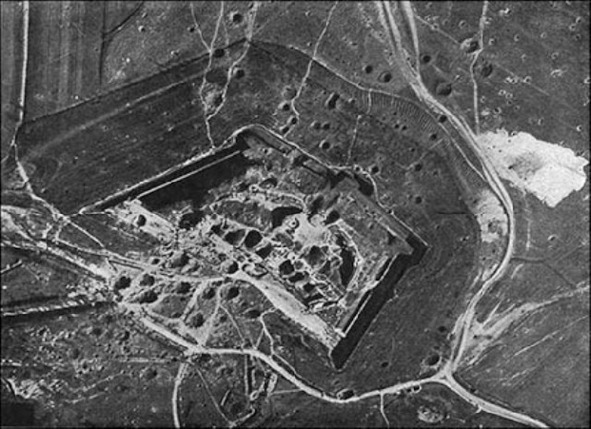
From January 20, 1915, the Russian and Austro-Hungarian armies almost simultaneously begin their offensive in the Carpathians. The result of a chain of battles that do not differ in diversity is 250,000 dead Russians, 230,000 Austrians and Hungarians. The garrison of the fortress of Przemysl exhausts food supplies, eats up the last horses, and surrenders. This is the last inspirational victory of the Russian army, won by small forces with acceptable losses. 120,000 soldiers of the Austro-Hungarian Empire are taken prisoner. On the photo – frames of the Russian aerial photography, one of the forts of Przemysl, March 1915
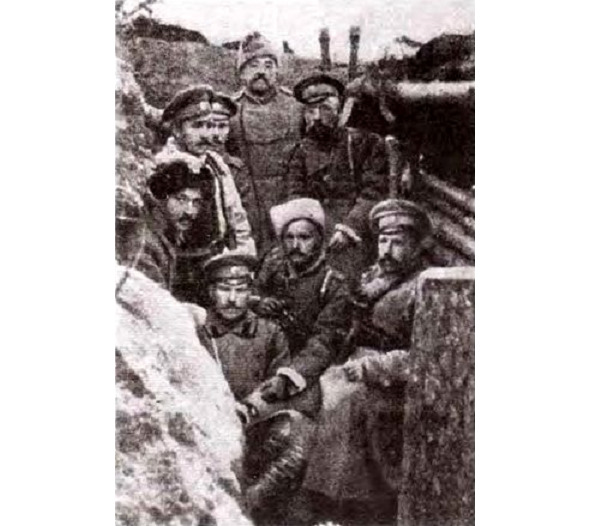
Storm of the Carpathians, winter of 1915. Russian soldiers. Randomly selected photo
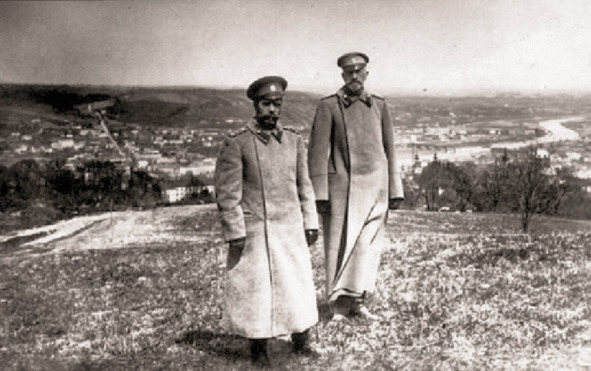
Emperor Nicholas II and Commander-in-Chief of the Russian Army Nikolai Nikolayevich (grandson of Nicholas I). It seems that still can be very good. Already very soon, the royal personages will visit the islands of Imbros, Tenedos in the Aegean Sea, will reverently enter the church of St. Sophia. Petrograd streets fill out festive demonstrations. In the temples solemn prayers are held. But we know that this is the peak of the achievements of our great and at the same time terrible past of the Empire. Further decline and collapse of the state. Neighborhood of Przemysl, March 1915
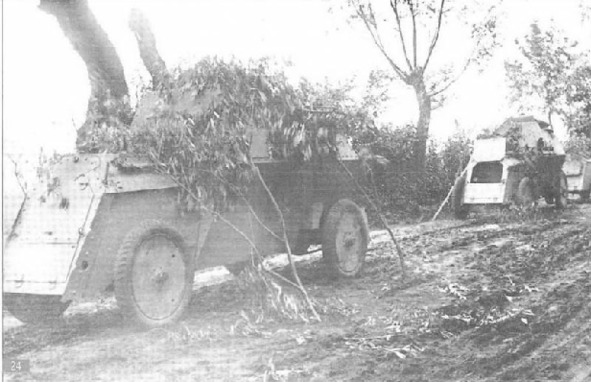
On February 7, 1915, the German armies began an offensive in the area of the Russian, and now Polish, city of Augustine. The maximum task is to surround and destroy the entire 10th Russian army, 155 thousand people. This plan is implemented only in part. One of the corps (38,000 fighters) gets into the environment, then a prisoner. Three other corps are moving to a new line of defense. Russia is losing 20,000 dead, 35,000 prisoners, Germany 5,000, and 4,000 prisoners. The territorial acquisitions of the German army are not large. The result of the subsequent Prasnysh operation is the counteroffensive of the Russian troops. By March 30, German troops return to their original line of defense. Russia’s irretrievable losses are 25,000, Germany’s 22,000. The photo shows Russo-Balt armored cars in the Prasnysh operation, March 1915. The armor is penetrated by rifle bullets from 30 meters, although their prohibitive action is already small. Russian, machine-gun and cannon armored cars that shoot Germans point-blank, have a decisive influence on the success of the counteroffensive
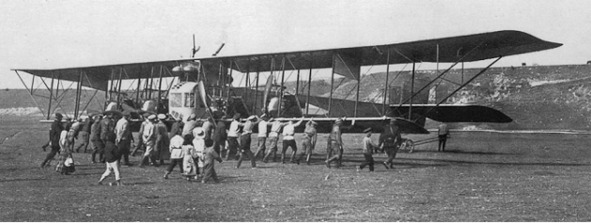
For the first time, the heavy bombers “Ilya Muromets” take off on February 14 (27), 1915. Most of the targets are located on the territory of modern Latvia. Initially, the aircraft factory as a branch of the famous Russo-Balt was located in Riga. In 1915 he was evacuated to Central Russia. The production of airplanes continued until 1918, with the domestic aircraft engines Russobalt, which replaced the German Argus. In the civilian version, the revolutionary C-22 was designed to transport a dozen passengers with all imaginable amenities. The bomber has a takeoff weight of 5 tons. Crew – 5—7 people, 4—6 machine guns, 350—500 kg. bombs. Engines are protected by armor 5 mm. The maximum speed of 135 km. hours, the flight duration of 4—5 hours, the ceiling of 3 000 meters. Built 83 copies
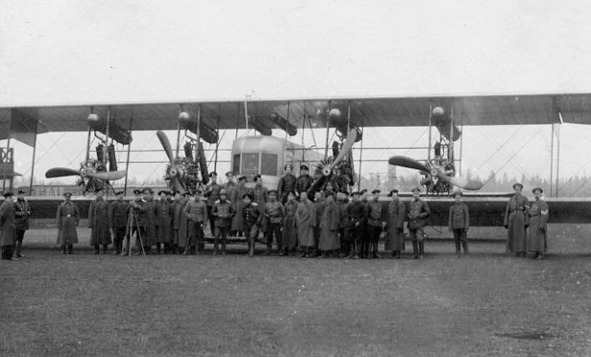
A squadron of 60 cars makes 400 combat sorties, drops 65 tons of bombs, shooting down 12 airplanes. The first “Ilya of Murom” was lost in aerial combat on September 12, 1916, in a battle with four German fighters. In this case, three enemy aircraft C-22 can be shot down. The effectiveness of the bombing of “Ilya Muromets”, according to the assurances of British experts, reaches 90%. For some time, the “backward” Tsarist Russia waged a high-tech war. Be that as it may, the airplanes wear out, and their entry into the troops is difficult due to the exacerbated political situation. By 1917, only four such aircraft remained on the front line. Designer Igor Sikorsky and the tsarist government are selling a license to design the heavy bomber Entente. The last flight, like a training airplane, “Ilya Muromets” makes October 10, 1922 over the city of Serpukhov
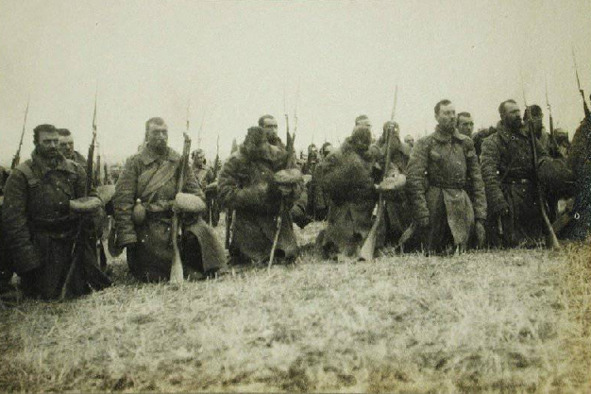
Russian soldiers in worship, spring 1915. The army obeys orders and is considered Christian. However, ceremonial as a thing in itself prevails over content. A called peasant, a worker does not speak heart to heart with a regimental priest. So just historically not accepted. Why do you need to shoot at the Germans, because they are the same people like us? Is it possible to consecrate the murder weapon? The priests are friends of the officers, they talk to them, they dine and drink with them
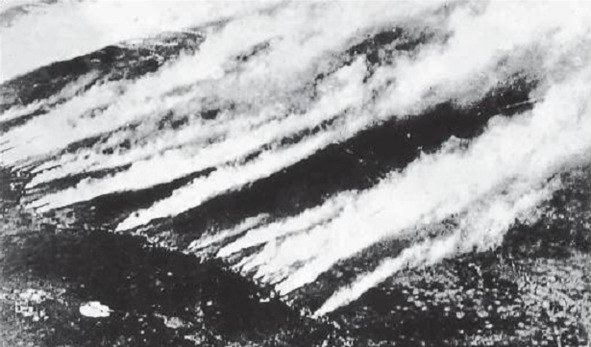
The first four months of the new, 1915, the parties to the conflict are gathering strength on the Western front. Then, for the first time in history, Germany applies the novelty of military thought – it releases one hundred and fifty gas cylinder batteries, 6 km from hundreds of cylinders. front line, 180 tons of toxic chlorine. The lungs of people caught in this fog are filled with a caustic mucous liquid. Following a cloud of yellow-green gas, in bandages soaked with protective compounds, German soldiers are marching. Such an apocalyptic picture discourages the British and the French not for long. Pull up reserves, already have some means of chemical protection. German troops stop, and the gap in the line of defense of the Entente is healed. As early as September 25, 1915, the Allied forces were conducting their “test” chemical attack. From 22 April to early May, a total of 10,000 Entente soldiers are injured by poisonous gases, 5,000 die. The photo is a snapshot from an airplane. German teams release chlorine from cylinders at the junction of British and French troops. The neighborhood of the city of Ypres, April 22, 1915
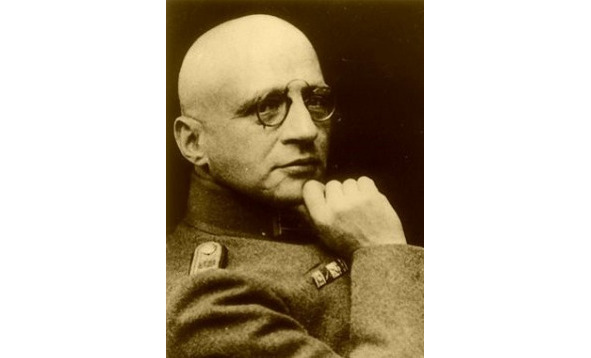
Fritz Gaber, outwardly cinematic Dr. Evil (Ivl), head of the Kaiser Wilhelm Institute of Physical Chemistry, developer of chemical weapons, inspirer of use. The wife of a scientist does not stand up to the thought that thousands of people perish through torture through the fault of her husband, and he commits suicide. Thirty years later, in the concentration camps of the Third Reich, the gas Cyclone B, developed by the same chemist, killed tens of thousands of tribesmen Haber
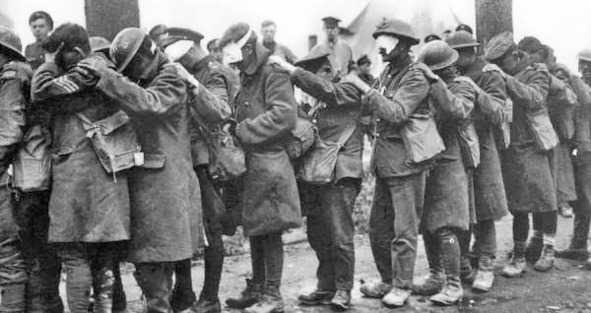
Two years later, all of the same long-suffering Belgian city of Ypres, the Germans use a chemical warfare agent, called yperite (mustard gas), respectively. Shipping method improved. Now they are mines made of mortars, filled with oily liquid. One of the actions of the reagent in non-lethal doses is the complete or partial loss of vision. In the future, such an ignoble weapon does not take root, the countries that use it become international outcasts. In the photo – British soldiers struck by agents hold each other as they proceed to the hospital, the second half of July 1917.
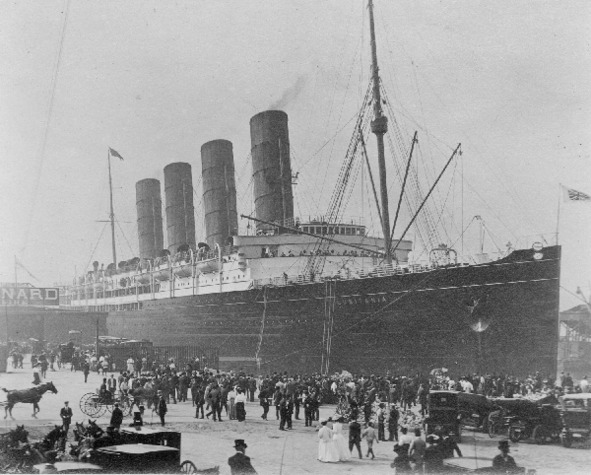
“Louisiana”, a British passenger vessel operates commercial flights during the war. According to some maritime laws of our time, it should not be torpedoed. The cabins are barely half full, and yet almost 2,000 people are aboard the liner. At 48 kilometers from the coast of Ireland, in a fog “Luizitania” reduces the course to 25 km. h. At this speed, the attack of submarines is already possible. Hungry for new victories, the captain of the German U-20 submarine gives the order to attack the “big four-pipe vessel”. Torpedo gets into the right side. In a few minutes, a much more powerful internal explosion follows. Due to the strong roll and the course of inertia, it is possible to lower only 6 of the 48 boats. The vessel goes to the bottom 18 minutes after the attack. Photography – “Luizitania” in the port of New York, before departing on its last 201st flight, May 1, 1915
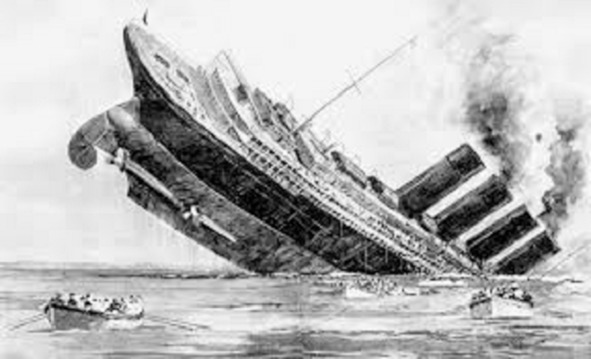
So, for some time by inertia, the liner continues to move to the coast. Desperate distress signals reach the recipients. More than a dozen fishing vessels rush to the site of the tragedy. It is possible to save 763 people, the remaining 1197 find death among the waves. Among them are 128 US citizens. Somehow the situation can be settled. America is not yet ready for a real, full-scale war. In addition, skeptics are sharpened by a worm of doubt – is everything so clear in a sea catastrophe? There were 5,000 boxes of rifle cartridges aboard the Luizitania – this is not denied. They could not detonate at the same time even under the action of a powerful torpedo charge. Small arms for transportation is not prohibited. Is it really a provocation of Great Britain, which so skillfully put the ship under a torpedo attack (the fact of torpedoing the German submarine is not disputed), which finished off with a special charge? It will take another two years of war with the homeland of the Anglo-Saxons, even an attempt on the territorial integrity of the United States, in order for North America to still enter World War I. Photography – the death of “Luizitanii”, May 7, 1915, the Celtic Sea. This is really a photograph.
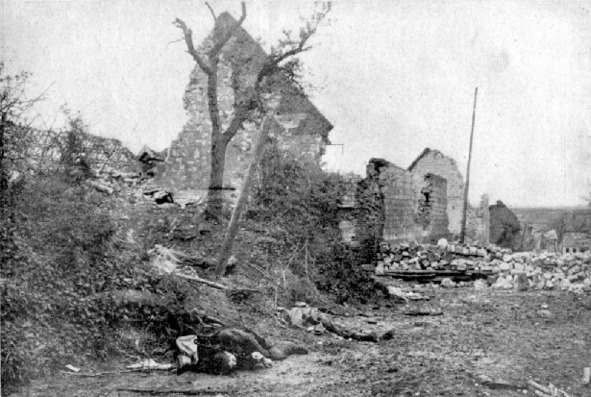
The next, very gloomy battle of the First World War is the Second Battle of the French settlement of Artois (May 9-June 18, 1915). The sides of the conflict, civilized Christians, exchange stunning artillery strikes. The bodies spill over like jelly. The British, the French are irretrievably losing 70,000 people, the Germans 50,000. The battles of Artois, Ypres, Marne repeat each other six months or a year later, differing only in the increasing number of victims. The psychological foundations of the New Chronology, which reduces several important events of the Middle Ages to the reign of one monarch or a single major battle, are now completely understandable. We have to stop the madness, prescribing a potent medicine to humanity – the World Revolution… It seems that the attitude of the workers and peasants of the Russian Empire is exactly that. Photo – Entente fighter who died in one of the many faceless battles of Artois, 1915
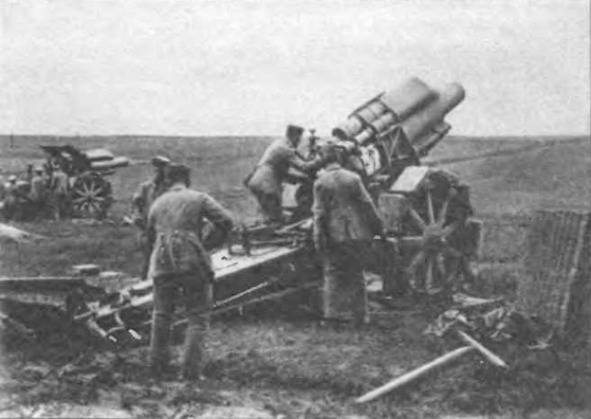
The Supreme Command of Russia (General Headquarters), despite intelligence data, is inertia preparing for an offensive in the Carpathians. The southern flank of the so-called Warsaw salient remains without reinforcements, with a small number of artillery and shells. Literally every shot from the Russians on the bill. At the same time, the combined German and Austrian troops are densely saturated with all types of guns, and have no problems with the supply of ammunition. On May 2, Austro-German troops inflicted a powerful blow near the town of Gorlice, with a general direction to Lviv. Taken with such general enthusiasm Przemysl left June 16. Lviv Russian troops leave June 22. Some consolation – on May 23, after long hesitations, Italy enters the war against the Fourth Alliance. However, she prudently does not lead active actions. The photograph shows a large-caliber German gun in the vicinity of Gorlice, the Carpathians, May 1915.
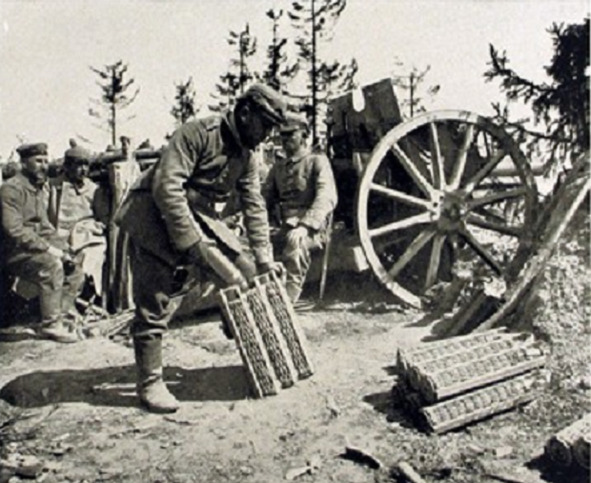
From June 26, 1915, the Austro-German troops were expanding the front of the attack on all of Poland and East Prussia. The well-fortified fortress Novogeorgievsk surrenders practically without a fight, after shelling from heavy guns and bombardment with the then rather primitive airplanes that are not a decisive weapon. 83,000 people are taken prisoner, including 23 generals and 2,100 officers of lower rank. In addition to all that, the enemy is transferred 1,200 guns and a million shells that are so scarce in the Russian army. A conspiracy theory is born in Russian society. As a result, Nicholas the Second became the Supreme Commander three days after the surrender. And, this is also not the best solution. Warsaw Russian troops leave on August 4. The great retreat continues. The photo shows a Russian artillery crew near a field 3-inch gun. Somewhere in Poland, summer 1915
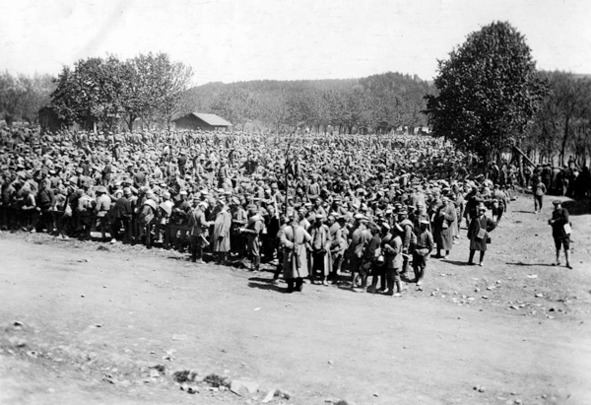
By the end of the year, the Eastern Front turns into a straight line connecting the Baltic and Black Seas, passing west of Riga, the Russian military-industrial center. According to the memoirs of General A. Denikin: “Spring 1915 will remain in my memory forever. The great tragedy of the Russian army – a retreat from Galicia. No ammo, no shells. Day by day, bloody battles, day by day, hard transitions, endless fatigue – physical and moral; then shy hopes, hopeless horror …». On the photo are Russian soldiers captured during the Great Retreat. Summer-Autumn 1915
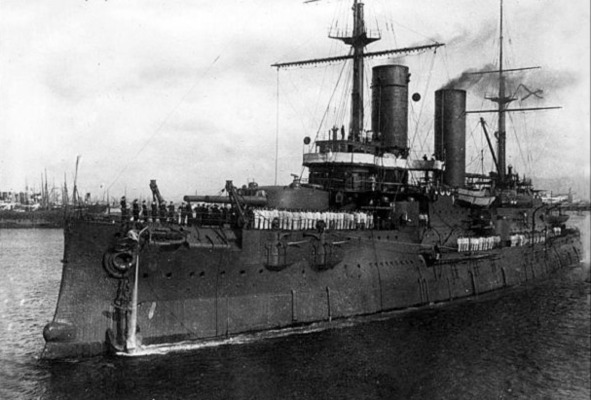
The support of Riga continues to be provided by the still efficient Russian fleet. Since August 8, more than 80 pennants of German squadrons are invading the Gulf of Riga (the first Moosund or Irben operation in 1915). Russian pilots find German minesweepers from the air. Soon a fire contact is established between the visitors and the approached squadron battleship Slava. Two minesweepers sink. Later in the battle enters the British submarine. She drowns the German battle cruiser. There is a series of sea surface battles. German ships, going at random through minefields, suffer serious damage from mines and enemy gunfire. By the end of August the invasion fleet leaves the Gulf of Riga. Germany loses 7 pennants, incl. Battleship and two light cruisers, 50 sailors. The loss of the Russian Empire – gunboat, damaged battleship and three destroyers, 70 people. The photograph shows the battleship Slava, one of the best ships of the Russian fleet.
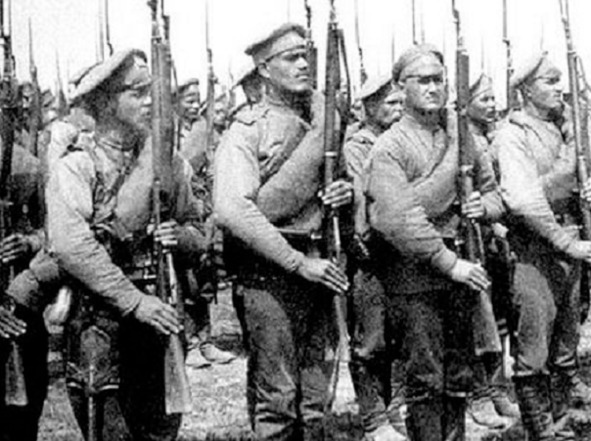
On October 14, 1915, Bulgaria joined the war on the side of the Central Powers. Allied Austro-Hungarian and Bulgarian forces are pushing the Serb army out of their own country. At the beginning of the next year, 150,000 troops are evacuated to Corfu Island, to mainland Greece, to Thessaloniki, where they form the Thessaloniki Front. The fighting in Serbia is described by some historians as “lethargic,” but during the First World War this country lost a tenth of the population. By Christmas, the rush of the Germans and the Austrians on the Eastern Front is choking. There is a lull. The loss of the Russian army – 700,000 killed, 400,000 prisoners. Germany is losing 67,000 people, with a minimum number of prisoners, the Austro-Hungarian Iimperia 230,000 killed and some thousand prisoners. Photography is a Russian expeditionary corps on the Thessaloniki Front, 1916. Some strategists at GHQ believe that the Bulgarians will not shoot at the Russians. These illusions are scattered



